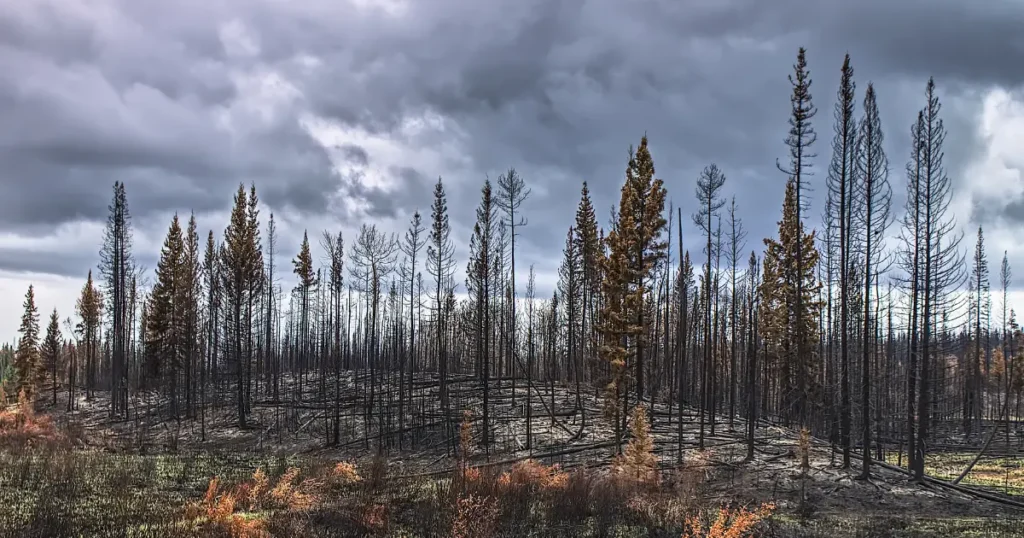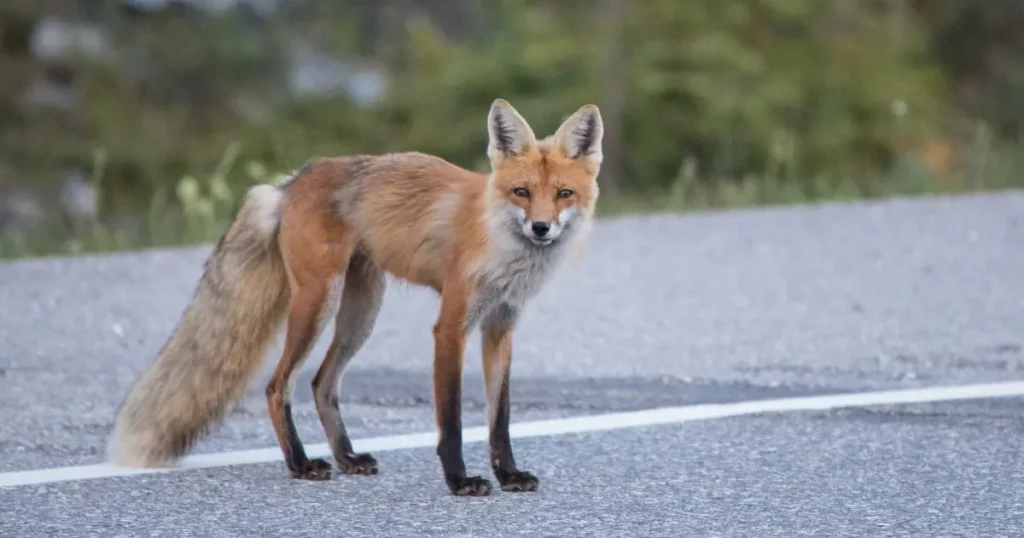
Wildfires destroy millions of hectares of forests, and can have significant impacts on wildlife and their habitats. The effects of a forest fire on wildlife can vary depending on the intensity, severity, and frequency of the fire, as well as the specific species and ecosystems involved.
Here are some ways in which forest fires can negatively impact wildlife:
1 Direct Mortality. Wild animals have evolved to sense danger, including fires. In many cases, they know what to do to keep themselves and their families safe. Some animals like bears, ungulates, coyotes and cougars will flee and travel large distances. Other smaller animals will try to tough out the blaze, climbing trees, hiding under logs and rocks or burying themselves in the soil.
But despite their best efforts to find safety, many wild animals will be killed directly by the smoke, flames, or heat of a wildfire. This is especially true for slower-moving species including older animals, young animals, injured animals, snakes, lizards, frogs, nesting birds, porcupines and small ground-dwelling mammals like squirrels, rabbits, voles, and mice.
Animals that are not killed directly from wildfire can suffer from ongoing risks and health problems. For example, research suggests that forest fires can weaken an animal’s immune system, making them more susceptible to disease and infections (Albery et al., 2021). Sanderfoot et al. (2021) argues smoke inhalation can lead to carbon monoxide poisoning, respiratory distress, neurological impairment and other acute and chronic health conditions in wildlife.
2 Habitat Destruction and Loss of Food Sources. Forest fires can destroy or severely damage the habitats of many wildlife species. For animals that rely on vegetation for food, a forest fire can destroy their food sources. This can lead to food shortages and malnutrition, and create competition in new areas with other wildlife.
The loss of habitat may also drive wildlife to nearby urban environments, increasing their proximity to humans. It’s important to be tolerant to these new visitors and extend compassion towards all wild animals in our communities, especially after wildfires. To help prevent wildlife encounters, please secure attractants including garbage, fallen fruit, compost, and other wildlife attractants.
3 Predator-Prey Dynamics. Forest fires can disrupt predator-prey dynamics. Predators may take advantage of the confusion and disorientation caused by fires to catch prey more easily. On the other hand, some prey species may be able to escape predators due to the chaos caused by the fire.
4 Loss of Shelter and Nesting Sites. Many animals rely on specific features of the landscape, such as fallen logs, snags (standing dead trees), and dense vegetation for shelter and nesting. Forest fires can destroy these features, affecting breeding success and their overall population.
5 Soil and Water Quality. The increased runoff and erosion that can occur after a fire can negatively impact water quality in nearby rivers and streams, affecting aquatic ecosystems and the animals that depend on them such as salmon.
6 Long-Term Effects. The recovery process after a fire can take years, even decades. During this time, wildlife populations and individuals may struggle to rebound as they wait for the ecosystem to restore itself.

Photo by Matthew James Ferguson / Getty Images
While forest fires can have negative impacts, it’s worth noting they are also a natural part of many ecosystems. Some species including ungulates have evolved to thrive in post-fire environments, and certain plants even depend on fire to release their seeds and stimulate growth. In some cases, fire can promote habitat diversity and maintain ecosystem health.
However, with the increasing frequency and intensity of wildfires due to factors like climate change, combined with continuous pressures of human activities and development, the overall balance of our forests is now completely disrupted.
The future for wildlife in Canada is extremely concerning and uncertain. We need to act now.
How to help the animals
- Prevent forest fires from happening! Unattended campfires, discarded cigarette butts, and other human activities like off-roading can all contribute to the ignition of wildfires. Use care and obey fire and burning restrictions in your community or province.
- Always report forest fires. If you see something, say something! In BC, to report a wildfire or irresponsible behaviour that could start a wildfire in British Columbia, please call 1-800-663-5555 or (*5555 from a cell phone) as soon as possible.
- If you see an injured animal, do not approach. Call your local wildlife rehabilitation centre for instructions, advice and referrals.
- Use caution when driving on nearby highways. During a forest fire evacuation, traffic on all local highways will be congested. Remain alert to avoid a collision as animals could also be using or crossing these same roads to escape the flames.
- Support wildlife rehabilitation centres and animal rescue groups. Various charitable groups work around the clock to accept injured animals from forest fires. They are often in need of donations and supplies including blankets, medical equipment and even volunteers. Contact them directly for a list of their specific needs.
- Talk to your MLA and MP. Urge provincial officials to prioritize and fund the protection of our forests and waterways and halt the recreational killing of all animals (such as commercial trapping) to give wildlife a chance to recover.
Our hearts go out to all of the people, animals, and forests who have been negatively impacted by fire.
Note: information provided in this blog is for general educational purposes and is not necessarily specific to British Columbia or other provinces and territories. To the best of our knowledge, there are no specific studies related to the long-term impacts of BC forest fires on BC wildlife.
References
Albery, G. F., Turilli, I., Joseph, M. B., Foley, J., Frere, C. H., & Bansal, S. (2021) From flames to inflammation: How wildfires affect patterns of wildlife disease – fire ecology. Springer Open. https://fireecology.springeropen.com/articles/10.1186/s42408-021-00113-4
Fonseca, F. (2021). How wildfires impact wildlife and their habitats. PBS. https://www.pbs.org/newshour/science/explainer-how-wildfires-impact-wildlife-their-habitat
Sanderfoot, O.V., Bassing, S.B., Brusa, J.L., Emmet, R.L., Gillman, S.J., Swift, K. & Gardner, B. (2021). A review of the effects of wildfire smoke on the health and behavior of wildlife. Environmental Research Letters. 16. https://iopscience.iop.org/article/10.1088/1748-9326/ac30f6
Streeter, S. (2021, December 3). Wild animals and wildfires. Faunalytics. https://faunalytics.org/wildlife-and-wildfires/
